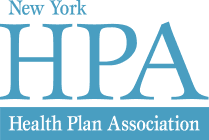The New York Health Plan Association (HPA) reached out to state lawmakers last week in anticipation of the Department of Financial Services (DFS) releasing its decisions on 2017 health insurance premiums, with the goal of helping lawmakers and their constituents understand the factors that impact and drive up premiums.
“New Yorkers with health insurance coverage recently received notices about their 2017 premiums and, for many, those rates are proposed to go up — and in some cases, significantly,” said Paul Macielak, HPA president and CEO. “What we want to remind everyone is that health care premiums are the direct result of the underlying cost of care that continues to impact health plans’ costs of providing coverage.”
HPA developed an infographics to share with lawmakers designed to illustrate those cost drivers, including:
- Drug Costs: Data from the Centers for Medicare and Medicaid Services about health care costs shows spending on prescription drugs in 2014 increased 12.2%.
- Hospital Consolidation: Several recent studies show hospital mergers increase costs. Northwestern University’s Kellogg School of Management examined more than 500 hospital mergers from 2002 to 2012 and found “cross-market” mergers (mergers of facilities within a region) in the same state resulted in price increases of roughly 6% to 10%. A University of Southern California study found prices in two of California’s largest health systems were 25% higher than other hospitals around the state, with the difference directly linked to the hospital chains using their market power to win higher rates.
- Government Mandates and Taxes: New York health plans currently pay more than $5 billion per year in state health care taxes, including the covered lives assessment and patient services assessment under the Health Care Reform Act (HCRA) as well as premium taxes and insurance assessments. The Affordable Care Act (ACA) also imposed new taxes and fees on health care coverage that put upward pressure on premiums. Regulatory and legislative actions increase costs and premiums as well. The state Attorney General’s office and the Department of Health’s requirement to revise health plan criteria for access to drugs used to treat Hepatitis C will drive steep increases in plan spending on these unjustifiably expensive drugs. Also, recent legislative approval of the Governor’s breast cancer screening and opioid and heroin mandates, while well intended, will increase utilization and costs of services, consequently adding to the overall price of coverage.
- Continued Plan Losses: Seventy-five percent of plans on the NY State of Health exchange reported operating losses in 2014. Losses for the individual market alone totaled more than $160 million, according to Standard and Poor’s. Despite continuing increases in costs and mounting plan losses, DFS has cut heath plan premium requests each of the past two years—by more than 30% for 2016 and more than 50% for 2015. Prior year losses resulting from DFS artificially suppressing rates is one of the very reasons why plans this year are seeking significant premium increases.
New York health plans filed applications for their 2017 premiums with DFS, requesting a 17.3% average increase for individual policies and 12% for small groups, and HPA noted the costs highlighted above directly factored into those increases. DFS is expected to make its final decisions on rates later this week.
“No matter what the size the premium increases are, it’s a pretty sure bet that people will still want to blame the health plans—after all, they’re the ones sending the bill,” said Macielak. “However, it’s important to remember that health plans are merely the messenger of the high cost of health care, and pointing the finger at plans will do nothing to address the underlying problems.”
